[Editor’s Note: Today’s post features two semi-finalist entries from our recent Army People Synchronization Conference Writing Contest.
Soldier for Life – Strategic Alignment of Generational Experience and Expertise (SAGE2), by Brandon S. Allen, proposes capitalizing on the  talent of previous generations of Soldiers to prepare current units for cyber- and space-denied areas of operations.
talent of previous generations of Soldiers to prepare current units for cyber- and space-denied areas of operations.
Securing the Information Home Front: Family Member Led CyberTeams, by LTC Nathan Colvin and Marie Le Scolan, advocates leveraging family members to create self-sustaining teams to help protect the information home front.
Together, they contribute to the on-going discussion of how we can maximize the Army Team’s potential in the face of renewed Great Power Competition and Conflict — Read on!]
Soldier for Life – Strategic Alignment of Generational Experience and Expertise (SAGE2)
by Brandon S. Allen
Sage: Middle English (as an adjective); from Old French, from Latin sapere ‘be wise’ — noun
1: one (such as a profound philosopher) distinguished for wisdom
2: a mature or venerable person of sound judgment (Merriam-Webster’s Collegiate Dictionary, 1999)
Leading up to 2035, the Soldier for Life – Strategic Alignment of Generational Experience and Expertise (SFL-SAGE2) Program will assist in providing solutions to individual, team, and social challenges while maximizing 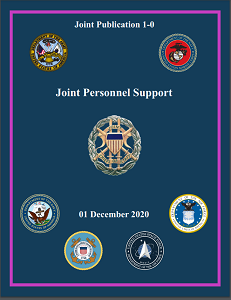 performance. SFL-SAGE2 aligns with JP 1-0, Joint Personnel Support (United States, 2020) through the experience and expertise of civilian personnel via retirees or former Soldiers to accomplish the mission. Skates (2021) noted the Army will not enjoy domain access and superiority in future Multi-Domain Operations (MDO) as it did during the wars in Afghanistan and Iraq. Additionally, by 2035, advances in technology by both US and adversary forces may render the cyber and space domains
performance. SFL-SAGE2 aligns with JP 1-0, Joint Personnel Support (United States, 2020) through the experience and expertise of civilian personnel via retirees or former Soldiers to accomplish the mission. Skates (2021) noted the Army will not enjoy domain access and superiority in future Multi-Domain Operations (MDO) as it did during the wars in Afghanistan and Iraq. Additionally, by 2035, advances in technology by both US and adversary forces may render the cyber and space domains 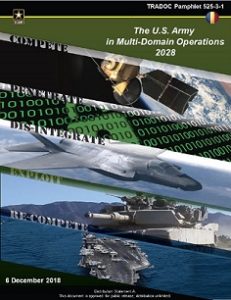 untenable to support MDO. As a result, the Army may need to rely on analog or antiquated doctrine to conduct MDO. Through the SFL-SAGE2 Program, former Soldiers with the necessary pre-Information Age experience and expertise lend their skills to their modern counterparts via a codified teach/coach/mentor training program nested within the existing Soldier for Life framework.
untenable to support MDO. As a result, the Army may need to rely on analog or antiquated doctrine to conduct MDO. Through the SFL-SAGE2 Program, former Soldiers with the necessary pre-Information Age experience and expertise lend their skills to their modern counterparts via a codified teach/coach/mentor training program nested within the existing Soldier for Life framework.
Former Soldiers who self-select or receive invitations to volunteer for the SAGE2 Program will complete a survey that captures their current location, areas of experience and expertise, and their willingness to participate via in-person, virtual, or hybrid training programs to help prepare Army units to operate in cyber- and space-denied areas of operations. For example, the author is a former 98H Morse Code Interceptor. In a space- or cyber-denied environment, satellite, VHF, and modern digital communications methods may face disruption and HF Morse code may be one of the only ways to communicate. Units needing training on HF Morse code communications can 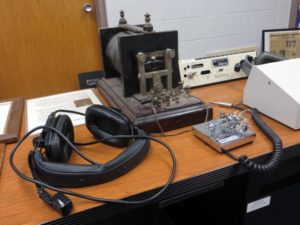 reach out through SFL-SAGE2 and request training. This type of teach/coach/mentor training capability has applicability across the Army to nearly every MOS that currently relies on technology and has an analog or pre-Information Age MOS.
reach out through SFL-SAGE2 and request training. This type of teach/coach/mentor training capability has applicability across the Army to nearly every MOS that currently relies on technology and has an analog or pre-Information Age MOS.
The SFL-SAGE2 Program does not limit itself to only helping operational units as they prepare for MDO. Former Soldiers with civilian occupations such accountants, lawyers, HR specialists, social workers, tradespersons, counselors, and health care providers can volunteer to provide advice and support (within the legal limits of their professions) to Soldiers and their families in their areas of expertise. The central repository of volunteers within the SFL-SAGE2 database provides a ready, willing, and capable network to respond to Army families’ needs during personal, local, or national crises; whether we are at war or not.
of volunteers within the SFL-SAGE2 database provides a ready, willing, and capable network to respond to Army families’ needs during personal, local, or national crises; whether we are at war or not.
Within the SFL-SAGE2 framework lies a talent management (TM) archive that complements the TM efforts of the active force to capture the “knowledge, skills, behaviors, and even preferences (KSB-Ps) of individuals during their career” (McConville, 2021). In the true spirit of “Soldier for Life,” volunteers for the SAGE2 program can continue to serve and make a  difference as they use their experience and expertise to accomplish the mission. In the uncertain and contested operational environment of 2035, every Soldier, no matter what their status, can make a difference and a positive impact on the Army.
difference as they use their experience and expertise to accomplish the mission. In the uncertain and contested operational environment of 2035, every Soldier, no matter what their status, can make a difference and a positive impact on the Army.
Securing the Information Home Front: Family Member Led CyberTeams
by LTC Nathan Colvin and Marie Le Scolan
While examples of hybrid warfare, grey-zone activity, and information warfare proliferate, few programs build Soldier, let alone family member, resilience to these threats. Families are creating troves of unclassified data that can be exploited by adversaries. As Alex Wichowski points out, every time we swipe our credit card, view a webpage, or enroll in a discount program, our digital 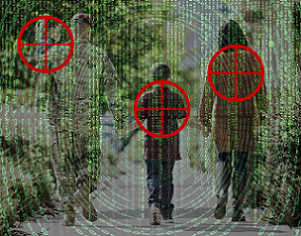 doppelganger gains fidelity. This is a new vulnerability, putting Army families directly in the cross-hairs of exploitation. This risk can be mitigated if the Army redesigns community services to enable families to protect personally owned devices and guard against disinformation.
doppelganger gains fidelity. This is a new vulnerability, putting Army families directly in the cross-hairs of exploitation. This risk can be mitigated if the Army redesigns community services to enable families to protect personally owned devices and guard against disinformation.
The nexus of Soldier daily patterns is not their government computers; it is personally owned smart-phones, voice-activated assistants, and Wi-Fi networks. Recent scandals, such as Cambridge Analytica, raised awareness regarding the ease that individuals, organizations, and governments can extract psychographic data to create predictive models. 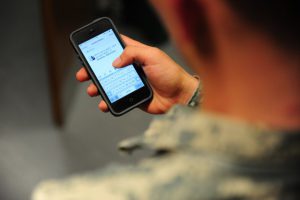 However, most Soldiers and families are not aware of this. As Artificial Intelligence provides increasing ways of developing meaningful patterns from big data, personal devices pose a vulnerability to Soldiers, families, and Army operations. Beyond collection, the minds of Army families may become the target of psychological manipulation from both broad and narrow avenues of attack.
However, most Soldiers and families are not aware of this. As Artificial Intelligence provides increasing ways of developing meaningful patterns from big data, personal devices pose a vulnerability to Soldiers, families, and Army operations. Beyond collection, the minds of Army families may become the target of psychological manipulation from both broad and narrow avenues of attack.
The Army must enable families to protect their networks, devices, information, and themselves from attack. The first safeguards are VPNs, antivirus, and other software issued to families. Secondly, provide simple courses on how to install these measures and set security features for network routers and connected devices. Identity protection and monitoring should be the new 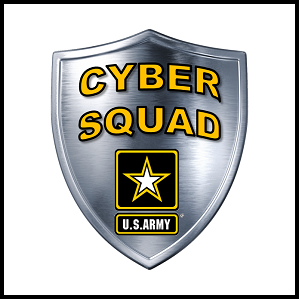 “digital SGLI.” Army provided “Cyber Squads” could make home visits to check on these settings and search for vulnerabilities. To protect the mindset of families, Army resiliency and holistic fitness programs must include tools to identify, report, and guard against disinformation as primary skills. This could have a secondary impact of preventing extremism.
“digital SGLI.” Army provided “Cyber Squads” could make home visits to check on these settings and search for vulnerabilities. To protect the mindset of families, Army resiliency and holistic fitness programs must include tools to identify, report, and guard against disinformation as primary skills. This could have a secondary impact of preventing extremism.
Simultaneously, a competent workforce is needed to do this work. Since it is known that military spouses often suffer from under- or unemployment due to multiple PCSs, they could be recruited to fill the front line of defending their families. Hundreds of state, private, and corporate initiatives seek to train military family members in cyber-security. Building partnerships, the Army 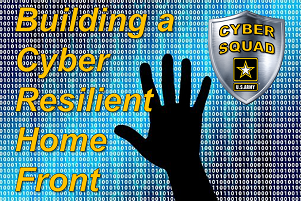 could create a corps of family member “interns” to fill “Cyber Squads.” Once a certain level of proficiency is obtained, family members could be hired as “Cyber Squad” supervisors and trainers, or given additional placement preference to information security and resiliency jobs on installations. Hence, family members are trained to circumvent technological risks to and prevent psychological interference, increasing their own transportability and employability.
could create a corps of family member “interns” to fill “Cyber Squads.” Once a certain level of proficiency is obtained, family members could be hired as “Cyber Squad” supervisors and trainers, or given additional placement preference to information security and resiliency jobs on installations. Hence, family members are trained to circumvent technological risks to and prevent psychological interference, increasing their own transportability and employability.
Capability in the future operational environment increases the surface area of attack to include Army families. The stresses on Soldiers are compared to the impact of witnessing families under digital and psychological attack. To mitigate, a mix of settings, software, and training of family members to create self-sustaining teams that protect the information home-front are essential components of resilience in our fast-changing world.
 If you enjoyed these two submissions, be sure to check out the Executive Summary from our Army People Synchronization Conference Mad Scientist Compendium, synopsizing the key themes we gleaned from the contest’s winning entry, semi-finalist submissions of merit, and a number of key Mad Scientist Laboratory blog posts. Then, as time permits, explore the wealth of underlying content using the embedded links for additional ideas on maximizing the Army Team’s potential!
If you enjoyed these two submissions, be sure to check out the Executive Summary from our Army People Synchronization Conference Mad Scientist Compendium, synopsizing the key themes we gleaned from the contest’s winning entry, semi-finalist submissions of merit, and a number of key Mad Scientist Laboratory blog posts. Then, as time permits, explore the wealth of underlying content using the embedded links for additional ideas on maximizing the Army Team’s potential!
Explore the challenges associated with Soldiering and talent management in the future force:
The Future of Talent and Soldiers with MAJ Delaney Brown, CPT Jay Long, and 1LT Richard Kuzma and associated podcast ; and The Trouble with Talent: Why We’re Struggling to Recruit and Retain Our Workforce by Sarah L. Sladek
… then learn about the threat posed by weaponized information in the following content:
China and Russia: Achieving Decision Dominance and Information Advantage by Ian Sullivan; The Exploitation of our Biases through Improved Technology by proclaimed Mad Scientist Raechel Melling; A House Divided: Microtargeting and the next Great American Threat by 1LT Carlin Keally; The Erosion of National Will – Implications for the Future Strategist by Dr. Nick Marsella; Weaponized Information: What We’ve Learned So Far…; and Insights from the Mad Scientist Weaponized Information Series of Virtual Events
About Today’s Authors:
Brandon S. Allen is a Supervisory Training Specialist in San Angelo, Texas, with over 31 years of combined Federal Service.
Marie Le Scolan is Political Science Student at Sciences Po Strasbourg, France with a desire to study and serve in the information warfare field.
Nathan Colvin is a PhD student in International Studies who mentors students in allied countries to build stronger transatlantic ties.
Disclaimer: The views expressed in this blog post do not necessarily reflect those of the U.S. Department of Defense, Department of the Army, Army Futures Command (AFC), or U.S. Army Training and Doctrine Command (TRADOC).
Soldier for Life – Strategic Alignment of Generational Experience and Expertise (SAGE2) References:
Merriam-Webster’s Collegiate Dictionary (10th ed.), (1999), Merriam-Webster Incorporated.
McConville, GEN James C., (2021, February 16), People First: Insights from the Army’s Chief of Staff, https://www.army.mil/article/243026/people_first_insights_from_the_armys_
chief_of_staff
Skates, MAJ Jesse L., (2021). “Multi-Domain Operations at Division and Below,” Military Review.
https://www.armyupress.army.mil/Journals/Military-Review/English-Edition-
Archives/January-February-2021/Skates-Multi-Domain-Ops/
Joint Chiefs of Staff, (2020). JP 1-0 Joint Personnel Support, Washington D.C. https://www.jcs.mil/Portals/36/Documents/Doctrine/pubs/jp1_0.pdf



